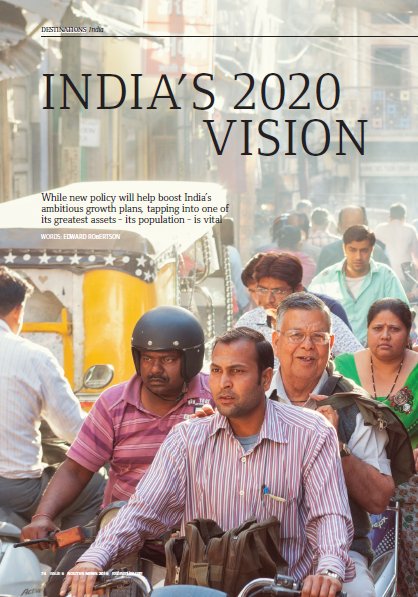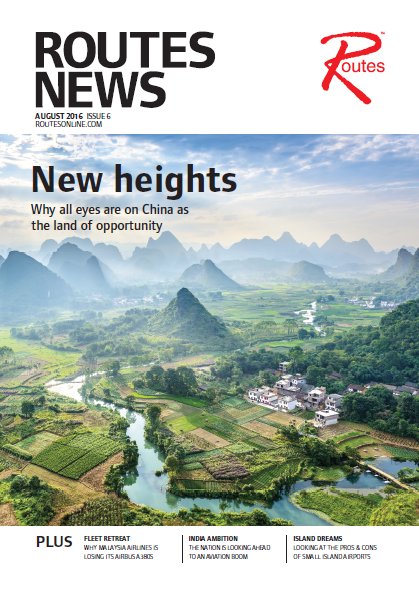India is the home of the paradox, a place where a single fact can be interpreted in two opposite ways with each carrying weight. This explains why, although the financial year of 2015-16 saw 223.61 million passengers take to the skies in the country, an increase of 17.6% year-on-year, there is still much work to do. After all, in a country of 1.33 billion inhabitants, this represents a penetration of 0.4 trips per head and is considerably less than a country like the US where the figure is two trips per person per annum.
However, Airports Authority of India (AAI) member of planning Sudhir Raheja only sees the figures in a positive light, describing the recent growth as “impressive”. He adds that it was largely driven by the domestic market, which at 168.89 million passengers is three times the size of the international market’s 54.72 million passengers.
He admits this balance might soon change. While the increase in the domestic market is 21.2%, compared to the international market’s 7.7%, the annual growth rate is expected to drop to 12% per annum, with the international growth rate expected to hit 8%.
But the AAI must move quickly if this growth is to happen. Currently the country’s airports have a capacity for 250 million, which is little more than 10% spare. For the projected growth to continue, India must have additional capacity in place within a couple of years.
While its passenger numbers can be viewed in two separate ways, so can its airstrip numbers. Although the country has a total of 476 airstrips, the gloss disappears when it is revealed that as many as 350 are non-operational at the moment, while 31 airports also remain unused. The core of the country’s airlift network is under the control of the AAI which manages 125 airports, including 11 international airports, eight customs airports and 81 domestic airports. However, only 75 of these airports have a scheduled airline service.
Where some people might see a half-empty glass, Raheja is resolute that the glass is half full and that the current growth is not only high but sustainable. On target for third largest by 2020 More importantly, he believes the industry, which is the ninth largest in the world with an annual value of $16 billion, is well placed to meet its target of being the third largest aviation market by 2020 and the overall biggest by 2030.
He adds: “India has a strong 300 million middle-income group with disposable income to travel at least once in a year by air. India’s strong economic growth projections are likely to ensure the sustenance of traffic trends both in passenger and cargo.
“AAI is therefore working zealously towards enhancing capacity to meet the projected growth,” he says. But in order to do so, Raheja admits there are a number of problems specific to India that must be overcome to ensure the country meets its targets.
Firstly he admits the AAI must do more to ensure its own airports are fit for purpose, especially as of the 125 under its care, only 94 are operational. Worse yet, while 31 are non-operational, there are huge discrepancies among those in use, as 45 airports in India handle more than 90% of passenger traffic.
Raheja says this problem is typified in the AAI’s current airport development programme which has seen 60 airports pass through it. “Out of these, the capacity at 10 airports which was enhanced to 30 million passengers per annum, has already reached saturation point. They require further augmentation,” he notes.
“At 23 other airports the capacity has been enhanced to 27.19 million passengers per annum. However, their use is only up to 17.1 million. At 14 other airports including Cooch Behar, Jalgaon and Jaisalmer the created capacity of 5.15 million has gone totally unfufilled. An improved network of regional connectivity will definitely pave the way for optimum use of this spare capacity,” he adds.
While the AAI has its own work cut out, Raheja believes there is only so much it can do without the help of powers greater than its own. He says: “Basically there are important issues like non-availability of land for airport development which require support from central and state government. Many airport projects have been delayed due to non-availability of land. Another major issue for airport development in small cities is the availability of funds for capital expenditure. Raising these funds from various sources is a bigger challenge for the AAI.”
Just as the authority is crying out for further funding, there are also calls for a cut in taxation as India faces a problem shared by many still developing their own aviation markets. “Most of the state governments levy high sales tax on jet fuel, only a few like Andhra Pradesh and Orissa have reduced this tax quite significantly,” Raheja says. “We expect other state governments to follow in order to encourage growth of civil aviation.
He believes the same goes for over-taxed passenger tickets, adding: “They should consider... lowering other taxes on air tickets in order to popularise air travel with the masses. “Government should consider this as saving of millions of man-hours. If a journey is undertaken by air instead of any other mode of transport, overall productivity of the country is increased.”
He also argues that the government must continue to work hard to maintain security levels at India’s airports, especially with the widespread prevalence of global terrorism. “The world watched in horror how Brussels airport was attacked by suicide bombers in March. We can’t allow any such incidents in India,” Raheja adds.
“There is a need for a collaborative approach of centre and state agencies to work closely to fill the gap of security personnel at various airport all over India and reduce the sales tax on jet fuel.”
Other issues the industry faces include a lack of skilled resource following a KPMG prediction that, by 2017, India’s aviation market would need a 120,000-strong workforce, ranging from pilots and engineers to cargo handling staff and cabin crew. However, Raheja is optimistic and believes the goverment is already moving in the right direction on a number of issues.
He believes a pledge by the government to invest $120 billion in airport infrastructure over the next 10 years will coincide with other factors to ensure growth predictions remain on track.
He adds: “The deeper air penetration to smaller cities, better connectivity to the north-eastern part of India and higher disposable incomes of the middle class are expected to further propel the growth of the Indian civil aviation sector.” Legislation is also changing to help drive the sector with the 2016-17 union budget including proposals to end customs and excise duty on all tools used for maintenance, repair and overhaul operations for aircraft.
Elsewhere, the ministry of civil aviation has approved in principle the creation of 15 greenfield airports, including Navi Mumbai International Airport and Goa Mopa Airport. Work is starting this year on both. Foreign direct investment ownership has also been increased to 49% while foreign equity levels in airport development are now set at 100%. Liberalising bilateral traffic rights should also help drive international traffic growth, Raheja believes.
But most importantly of all, he argues the passing of the New Civil Aviation Policy in July this year by the Indian government will prove key to helping regional route development. Measures include the revival of certain airstrips and airports as “no-frills” facilities, with no airport charges, police and fire services provided by state government and reduced tax on tickets for a year initially. Raheja says: “It will be a game changer in terms of regional activity.”
Perhaps this is where his optimism lies when confronting the paradox of the Indian aviation industry. There might be many problems but none of them are insurmountable, especially now as the government appears to be waking up to the benefits of the need for change and is demonstrably doing so.
Providing the growth remains intact, it should help solve penetration issues, meaning the people of India will be the key beneficiaries. Now it just remains to be seen if the sub continent will have the busiest market come 2030.
 |
This article is modified from an original feature that appeared in... ROUTES NEWS - ISSUE 6, 2016 PLEASE CLICK HERE to view the magazine. |
 |





